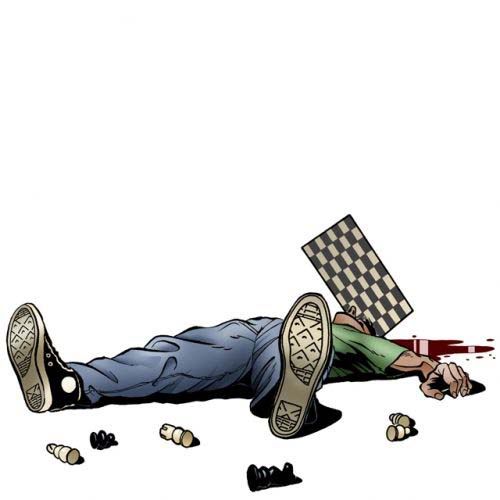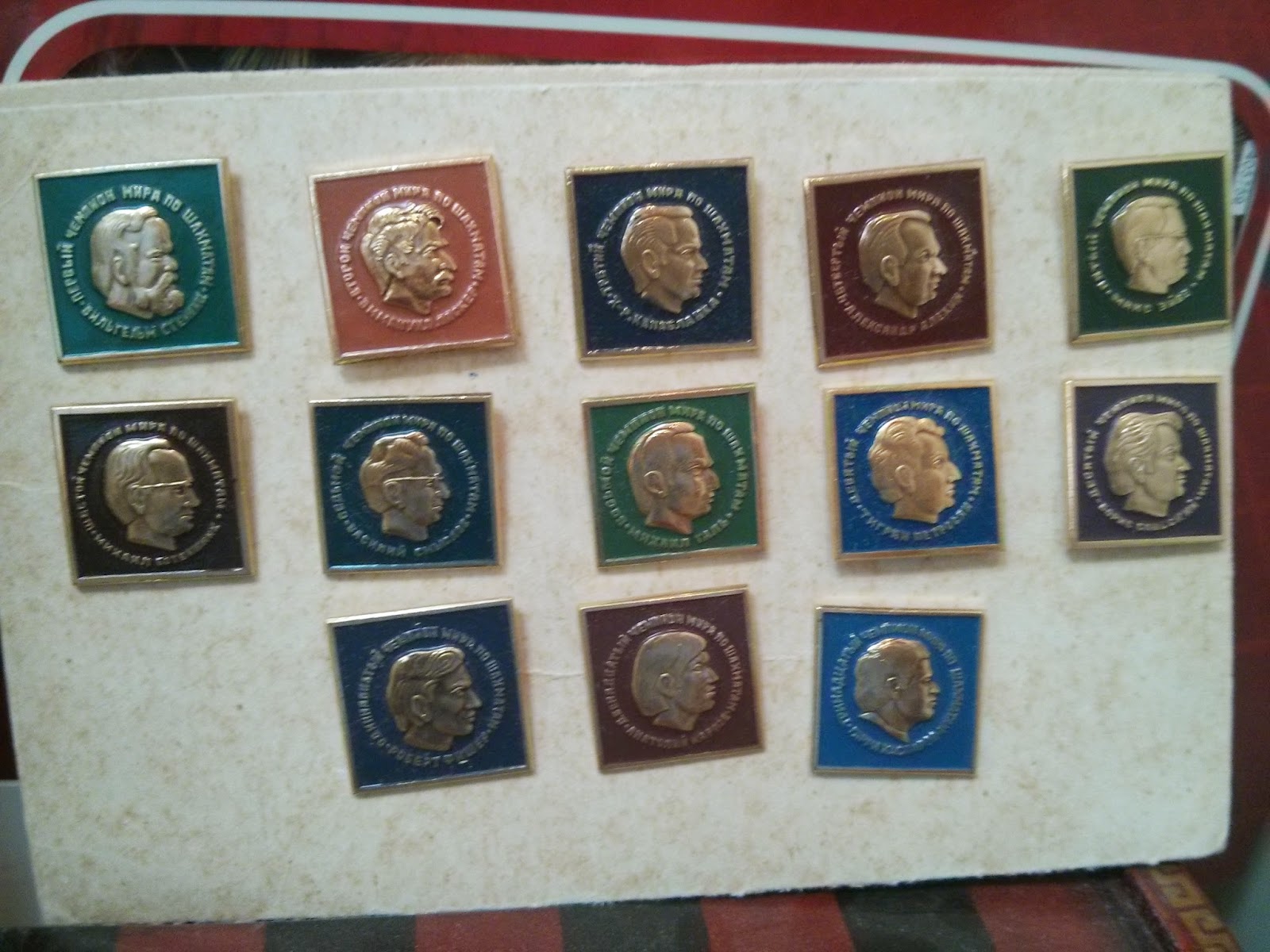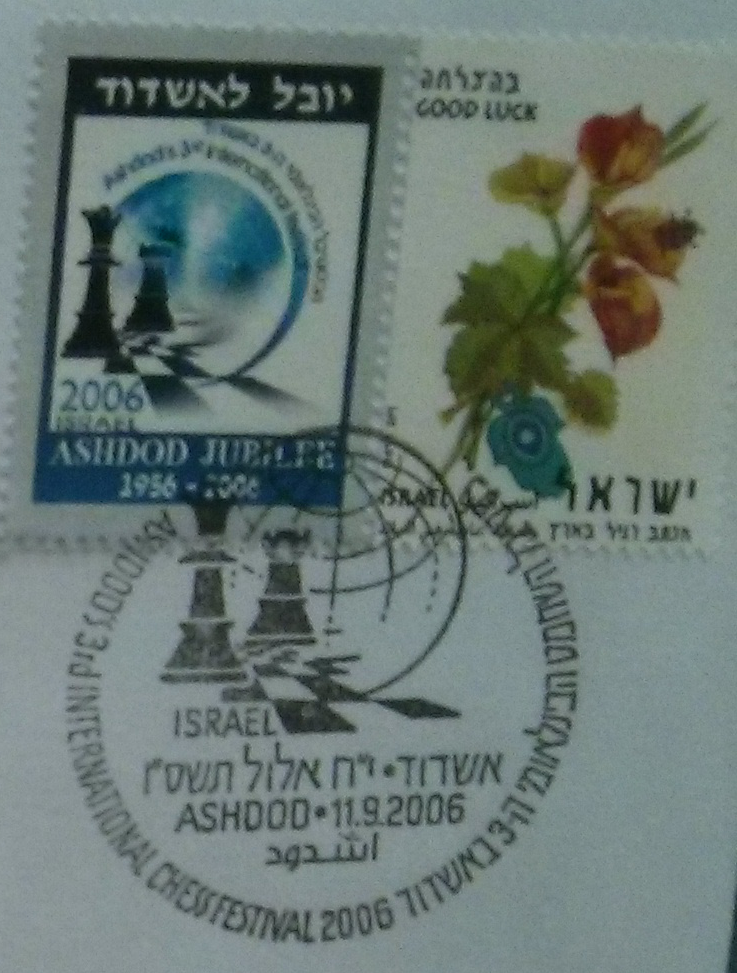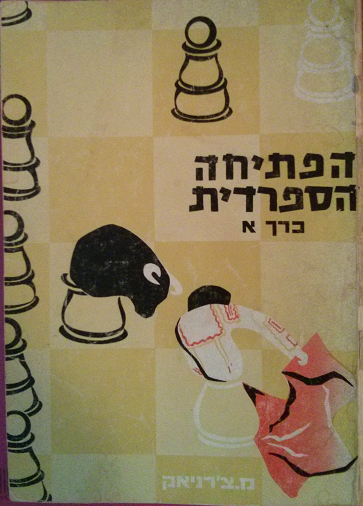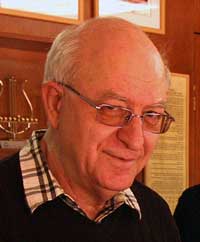In this new book,
Israel Gelfer and
Boris Spassky -- with the help (as acknowledged in the introduction) of
Ram Soffer -- look at the top games of top players and analyze them from scratch. For the book's purposes, 'top player' means those players (whether world champions themselves, like
Kasparov, or not, like
Keres) who have won serious games against at least 7 world champions -- although not necessarily
when they were reigning champions. The book is available online
here, or you can go to SlavChess's web site noted above.
In effect this book takes
Tim Krabbe's article 'Regicide' (found, e.g., in
Heroic Tales: The Best of ChessCafe.com 1996-2001, Ed.
Taylor Kingston, pp. 306-310) about those who beat the world champions and expands it. While Krabbe considers only serious wins against
reigning world champions, the authors here are willing to consider games won against world champions before or after they became champions: e.g., Keres beating
Capablanca in 1938 and
Smyslov in 1939.
The book includes (p. 295-296) the list of the 20 players, from Keres to Kasparov, who have beaten seven or more world champions from Capablanca to Anand. They choose 11 of those.
Keres,
Botvinnik,
Petrosian,
Geller,
Korchnoi,
Beliavsky, Smyslov,
Reshevsky,
Larsen,
Karpov, and
Kasparov are in the book. The authors re-analyze some of their victories against the world champions (they also add, but do not count for the purpose of the table, two games won by Beliavsky and Korchnoi againt
Carlsen). There is a total of 86 mostly deeply-annotated games.
The games themselves (all being serious tournament games) are, inevitably, well known -- and it is to the authors' credit that they do not pretend to have made some huge historical discovery, but modestly suggest that these good games deserve a re-analysis. What's more, they do not claim that the person who beat the most world champions is therefore the strongest player in the world. Kasparov (unsurprisingly) is at the top, but he himself is quoted (p. 9) noting that the list is unfair to the old champions since it includes wins against those who became world champions under the FIDE "knockout" system.
One could add, as
Edward Winter noted in his review of
Keene and
Divinsky's
Warriors of the Mind (in
Chess Explorations, 1996, pp. 227-230), that another reason for the unfairness of the list is that the moderns, such as Kasparov, often beat "old timer" world champions who were a generation or more older (e.g., in this book, Kasparov - Smyslov, 1-0, 1984). Unlike Keene and Divinsky, however, this book has three advantages that negate such criticism.
1). First, and as noted above, the authors here do
not claim that their selection somehow determines who was the "best player ever".
2). Second, limiting the selection to those who beat the most world champions, the premise of the book makes
historical sense: it is interesting to see who beat the most of the "chess immortals" at any time, even before and after they were champions. For example, I was a bit surprised to realize that Beliavsky made the list. He is of course a very strong player, but did you know he beat a total of
nine world champions -- every single one (except Botvinnik) from Smyslov to
Anand (not counting FIDE "knockout" ones)?
3). Third, and most important, Beliavsky's case is typical of the book. Not only do we get games where he beat the "old timers" when they
were old timers (a win against Smyslov in 1983 or Spassky in 1990), but also him beating young rising stars (
Kramnik in 1993) or the two K's when they were at, or near, the top of their game (Karpov in 1986 and Kasparov in 1983).
This mix between games where the 'regicider' beat the best when they were at their best, and games where he beat a rising future champion or an old veteran, is also the case for mort other players in the book. Of particular interest is that in many cases, the 'regiciders' not only beat the world champions when the world champions were at their best, or close to it, but when
they (the 'regiciders') were older, e.g., Larsen defeating Karpov in 1980.
Finally, there are some interesting historical anecdotes. Spassky (who, incidentally, clearly did quite a bit of work for the book, not merely lend his name to the project) notes (p. 7) that his years as world chess champion were the worst and most stressful of his career, bearing 'enormous responsibility' against the 'scalp hunters' and receiving no support. Keres replied with deep silence when Spassky told him he was lucky never to become world champion...
There are also many photographs, most well known (to those in the field) but some more obscure and interesting, though their sources could have been added -- as well as, while we're at it, a bibliography, which is inexplicably missing.
A spot check didn't find any typos, though an odd blunder was found:
Short appears on p. 296 as having beaten 9, and on p. 301 as having beaten 6, world champions; clearly the second list didn't consider the FIDE "knockout" ones (i.e., on p. 296 it is noted that Short beat
Ponomariov and on p. 301 Ponomariov isn't counted), but this means the second list was not, in fact, made following the 'same system' of counting the champions as the first, as the book says.
Note: there is a strange "bug" in blogger which "breaks" Larsen's name and forces a paragraph break above, for some reason.
Edited to add: Edward Winter
just wrote a short review where he,
inter alia, calls Spassky's prose in the book 'turgid' (C. N.
8921) and the book 'humdrum'. I am not so sure: I agree that the quote by Spassky given by Winter, a rather bland note (p. 7) on why do this book at all, is not high prose, but to repeat, I think that it is clear that Spassky contributed significantly to the book, not just wrote a polite introduction. As for the book being 'humdrum',I think the review above addresses the point: the authors make no particular claim to originality in finding new games, but merely that the
concept of collecting these particular games -- i.e., a collection, not of games some player(s)
won but the games some player(s) (in this case, world champions)
lost -- is legitimate.
The only book I know of which was similar was Reshevsky's
Great Chess Upsets, though they may be others.Thinking it over, perhaps the reason the format is unpopular is that when you collect serious games great players
lost, the games are almost inevitably well known top-tier games. The reader might thus be disappointed of the lack of new games. This may be an argument against such collections in general; but it is not, however, the authors' fault (in either book's case) that world champions simply do not lose serious games to second-tier opponents or play (let alone lose) such games in secret (with some rare exceptions).
I do, however, note Winter also complains the photographs in the book lack sources (he adds that some of them were taken from
Chess Notes). This, like the absolute lack of any bibliography, is a significant flaw that cheapens the book.


